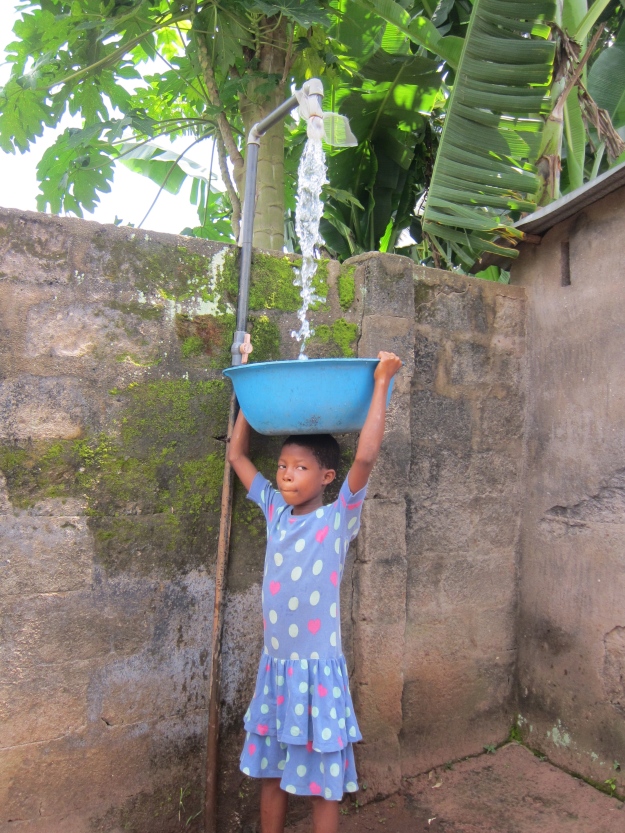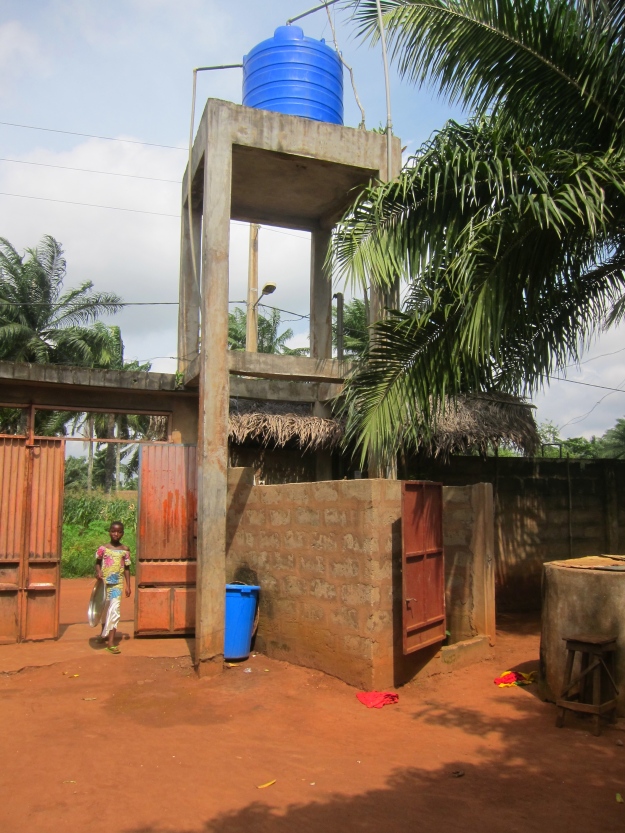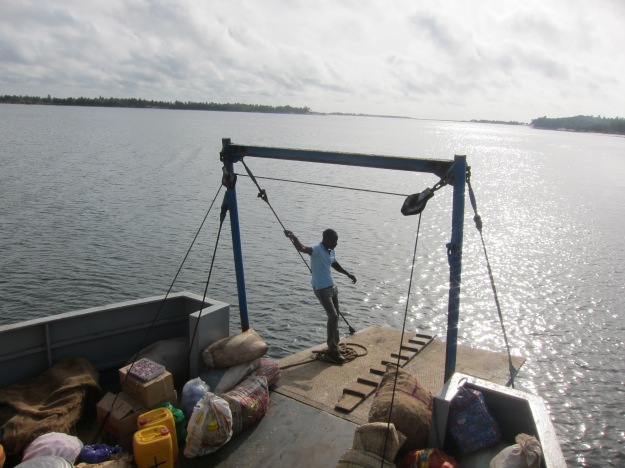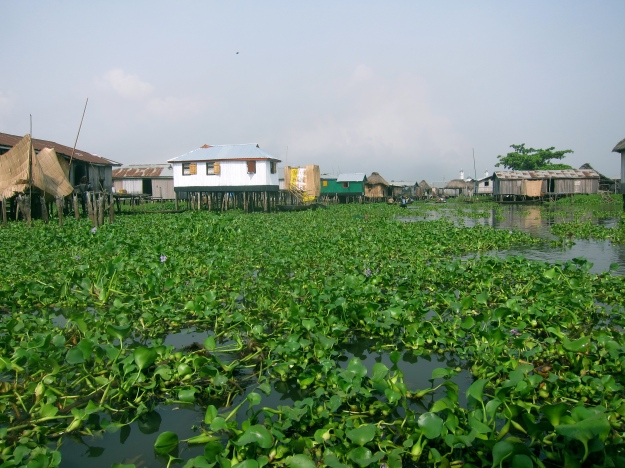Our house in Cape Verde* had running water. We (Jen) usually filled basins and then washed the laundry in the backyard. Occasionally our water would stop working for several days, however, and then we did the laundry (and bathed) in the nearby stream, about 100 yards away. You can see my contribution to the process in the photo below.
*Though Jen and I spent the first half of our Peace Corps service in Cape Verde, most of the photos we’ve shared on this blog have been of our second post — Benin. The next several weeks’ posts will be a flashback to our first year of service spent on the lovely island of Santiago.














